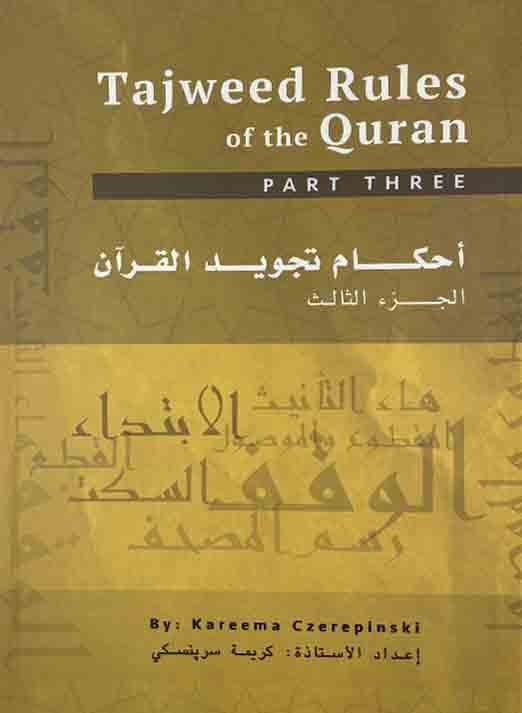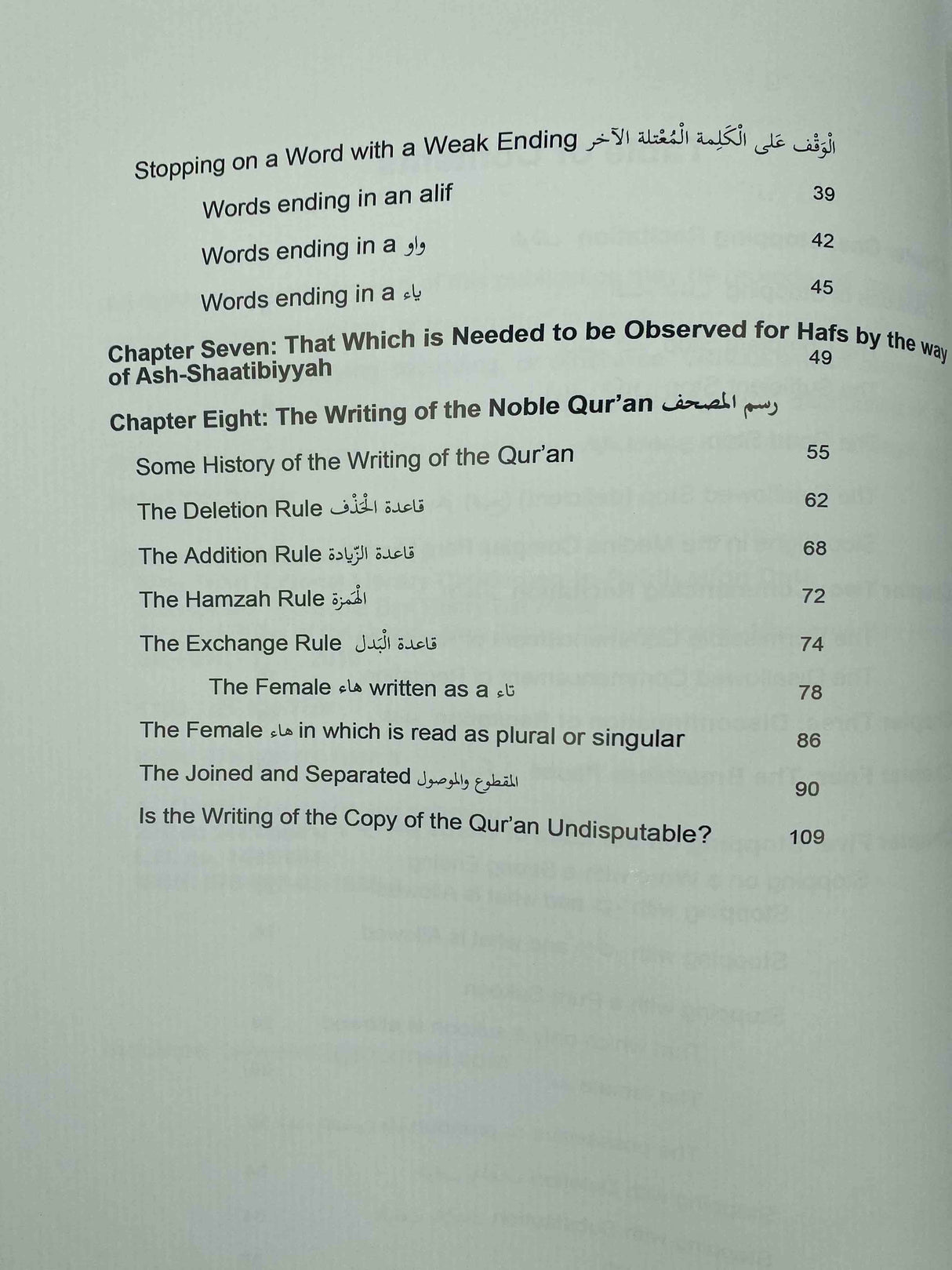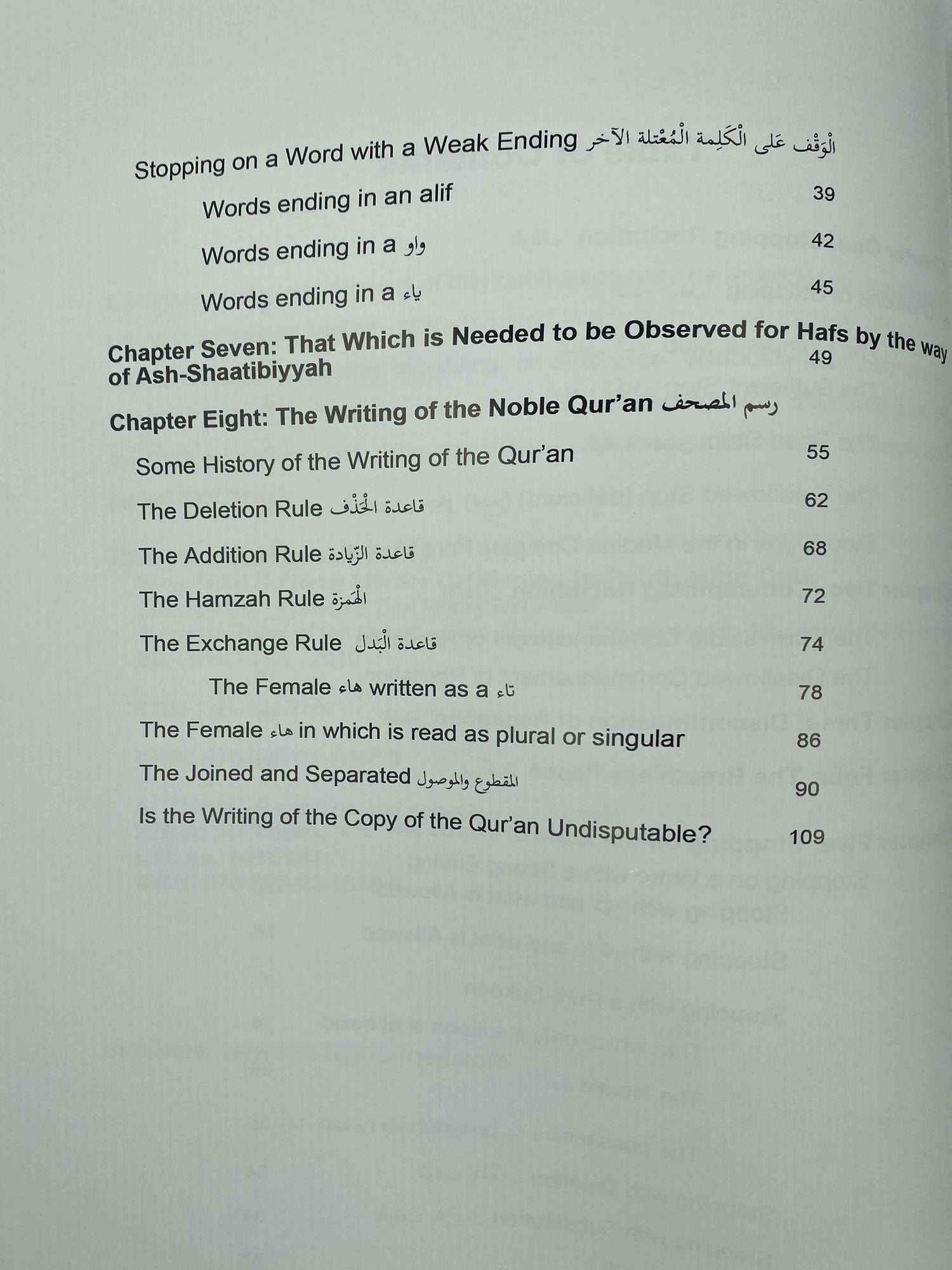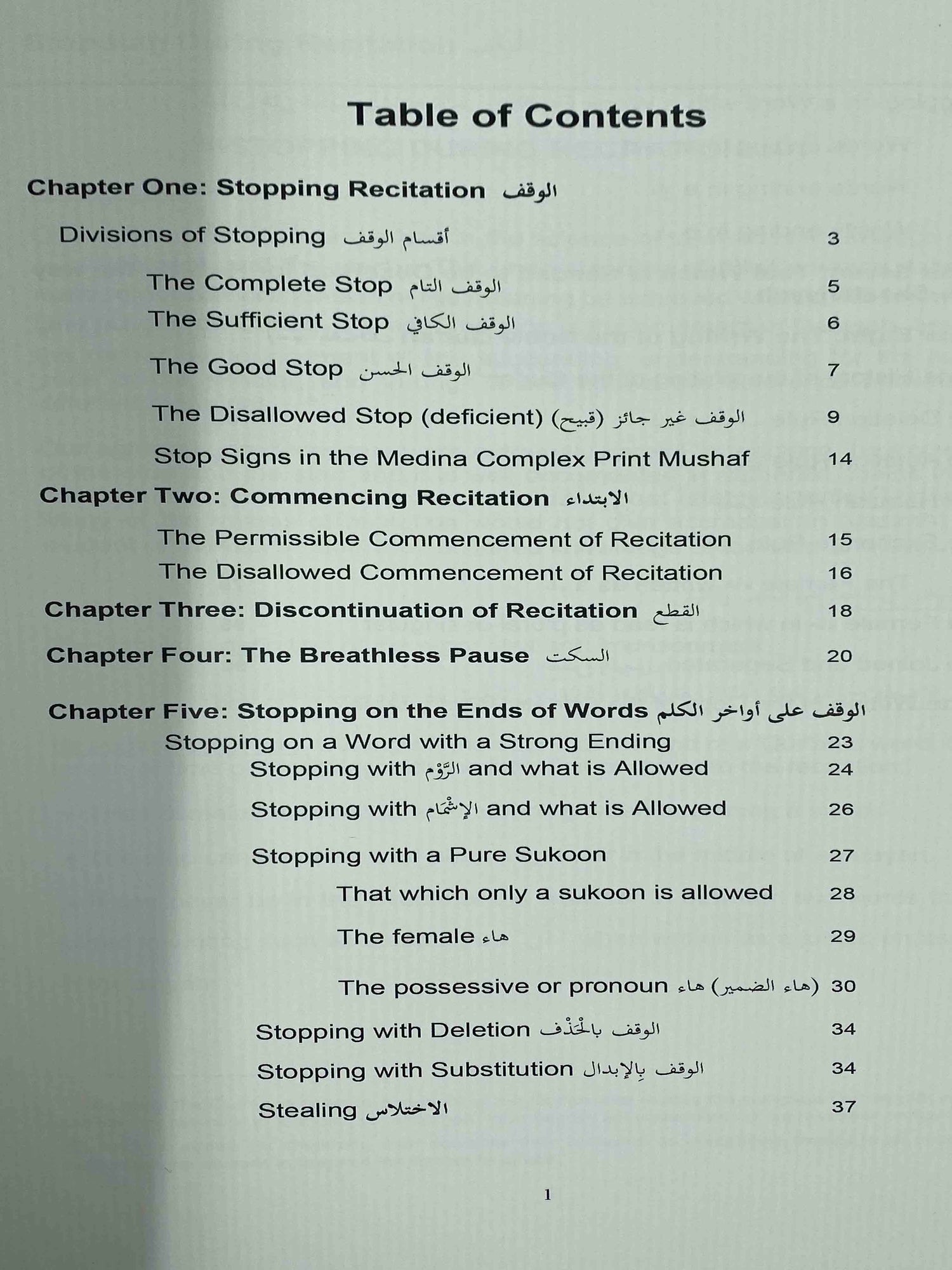Tajweed Rules Of The Quran Part Three
Tajweed Rules Of The Quran Part Three is backordered and will ship as soon as it is back in stock.
Couldn't load pickup availability
Description
Description
This final book explains the stop and start when reading the Glorious Qur'an, and gives details as to what kind of stop is allowed, what kind preferred, and what kind of stop is forbidden. Stopping on the ends of words with strong endings (consonants)and rules for what is allowed on the last letter of the word is described, including and Stopping on the ends of words with weak endings (words ending in the alif, ya' or wow) and different rules and explanations for these type of words is clarified. One important aspect of Qur'an recitation is knowing and understanding which word combinations are written together and which separately in different parts of the Qur'an as well as in which places of the Qur'an are some words are written with the female and in which places they are written with the This part lays out the different places in the Qu'ran these occurrences take place, so the reader knows how he/she can stop on these words. The words that are read in a special way, or have two allowed ways for the reading of Hafs from 'Aasim by the way of Ash-Shaatibiyyah are detailed in this book. The history of the writing of the Glorious Qur'an (– ) and the general rules for the writing of the Qur'an are laid out in the last chapter of this part
With this third part completed, insha' Allah the non-Arab English speaking student of the Qur'an will find a complete curriculum and explanation of the tajweed rules for the recitation of Hafs 'an 'Aasim from the way of Ash-Shatibiyyah in any classroom or study situation that he/she may find themselves in. These three parts are only guidance; the real goal is reciting and applying all the different rules correction which can only be done by reciting to and being corrected by a qualified teacher of the Qur'an
Delivery and Shipping
Delivery and Shipping
We endeavour to ship items as soon as the order arrives which is currently 1-2 working days.
For most regions and metro areas, shipping is $9.99
And, for any order of more than $100, shipping is FREE.
Payment & Security
Payment methods
Your payment information is processed securely. We do not store credit card details nor have access to your credit card information.







